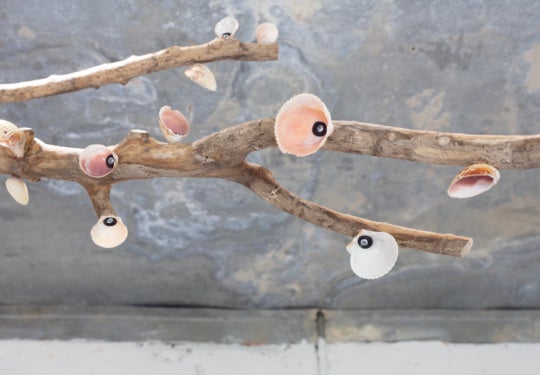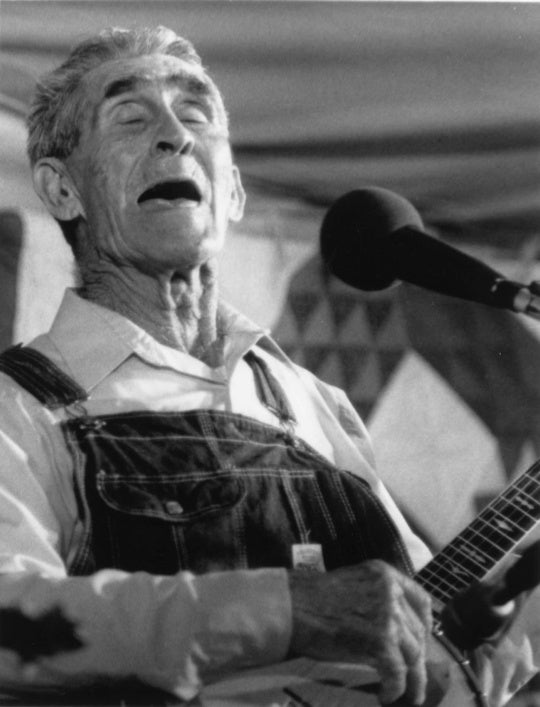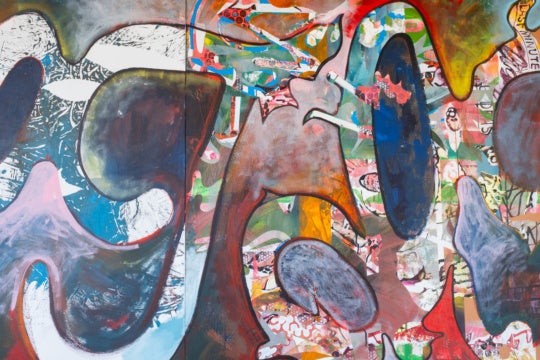
Atlanta-based artist Paul Stephen Benjamin is fixated on black. For nearly fifteen years, he has pursued a multifaceted and playful exploration of the term in its social, cultural, linguistic, material, aesthetic, and conceptual capacities. Black is the absence of light, a racial identity, an adjective, and more. In his first New York solo exhibition, Pure, Very, New—on view at Marianne Boesky Gallery from January 19 through February 16—Benjamin demonstrated the complicated nature of black and challenged visitors to expand their ideas around the word and all it implies. His ongoing study is fueled by Raymond Sanders’s 1968 essay “Black is a Color,” a response to poet and novelist Ishmael Reed. Saunders believed that blackness can and should be explored in artmaking but shouldn’t be the primary concern. To him, the notion that Black artists work must prioritize racial content was limiting and insulting. Fascinated by blackness both formally and conceptually, Benjamin explored the color through a series of paintings, a site-specific black light installation, photographs, sculpture, and single- and multichannel installations that were spread across Marianne Boesky’s two Chelsea galleries.
Souls/Soles (2019) comprised an arrangement of black lights that beckoned to visitors with its violet rays beaming from the floor. This gallery space showed Benjamin’s experimentation with Minimalist elements like seriality and repetition. The paintings Pure (2017), Very (2017), and New (2017) are named after various tones of commercial black paint Benjamin encountered while purchasing supplies. These paintings are meditations on how the titles are understood within and outside the context of the piece. Each canvas has its respective adjective painted in its specific tone as the words vanish into the monochromatic paintings. Black lights were installed above the large paintings as if they are to reveal the text, but black light cannot illuminate black toned objects. The Variations paintings Blackout, Almost, Beauty , Panther, Black Magic, Universal ,and Pure (all 2018) continue this analysis. Thick layers of black latex paint were applied to tar paper and installed next to each other to show the nuances between the tones and the names. The gallery had a violet glow; Ceiling (2017) consisted of broken tempered glass arranged in the center of the floor and refracted the black light from the diamond shaped installation Fourteenth Amendment (2017).
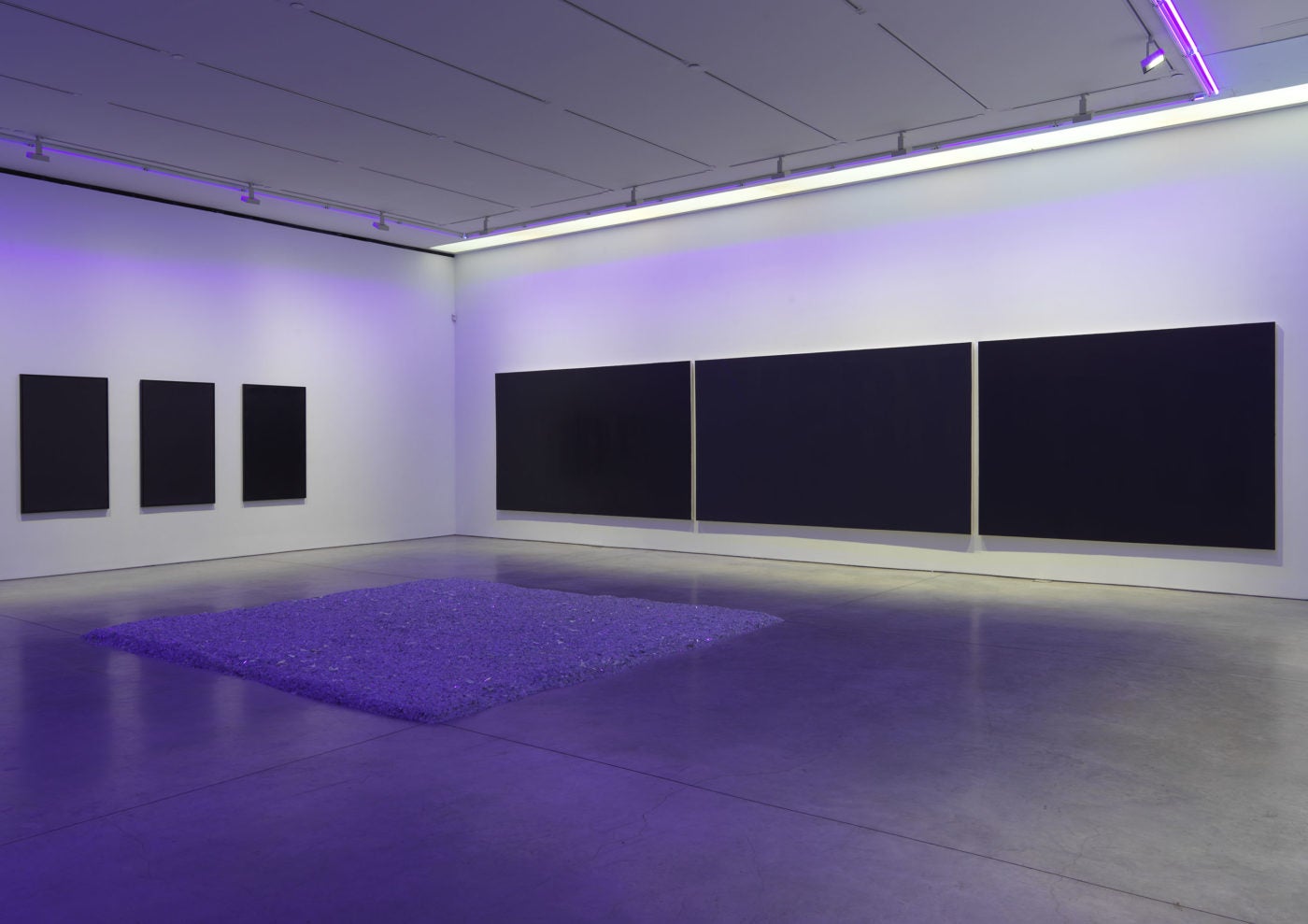
44 (2019) was a site-specific installation in the internal passage between the two galleries, a nostalgic reference to the Obama presidency and Dan Flavin’s light installations. One wall had six stacked squares comprised of black lights, while a single square rested adjacent on another. 44 physically and metaphorically links Benjamin’s more formal interrogation of black to the figurative portion of the exhibition. The muffled sounds of a woman’s crooning voice echoed into the chamber; the space felt sacred and allowed for a momentary pause.
Black masculinity, visibility, and authority were central themes in the other gallery. Benjamin’s Black Cotton Flag Made in Georgia (2019) resembles the American flag and was installed in the space on a flag pole. It gracefully draped onto the ground and its long, sweeping form cast a shadow on the wall. Across the room, the painting Paint the White House Totally Black (2017) depicts the White House using Behr Totally Black paint on a black-toned background. Nestled between these two works was Flow (2017), a series of twelve photographs depicting Black men, including Benjamin himself, installed in a single row. The images of these men were initially difficult to see, but their eyes engage with visitors as if summoning them to pay closer attention. Unlike the black-lit gallery, here the lighting was clear and unaltered. Black(ness) is visible and vulnerable yet powerful and proud. These works emphasized the intricacies of Black as a racial identity, classifier, and lived experience.
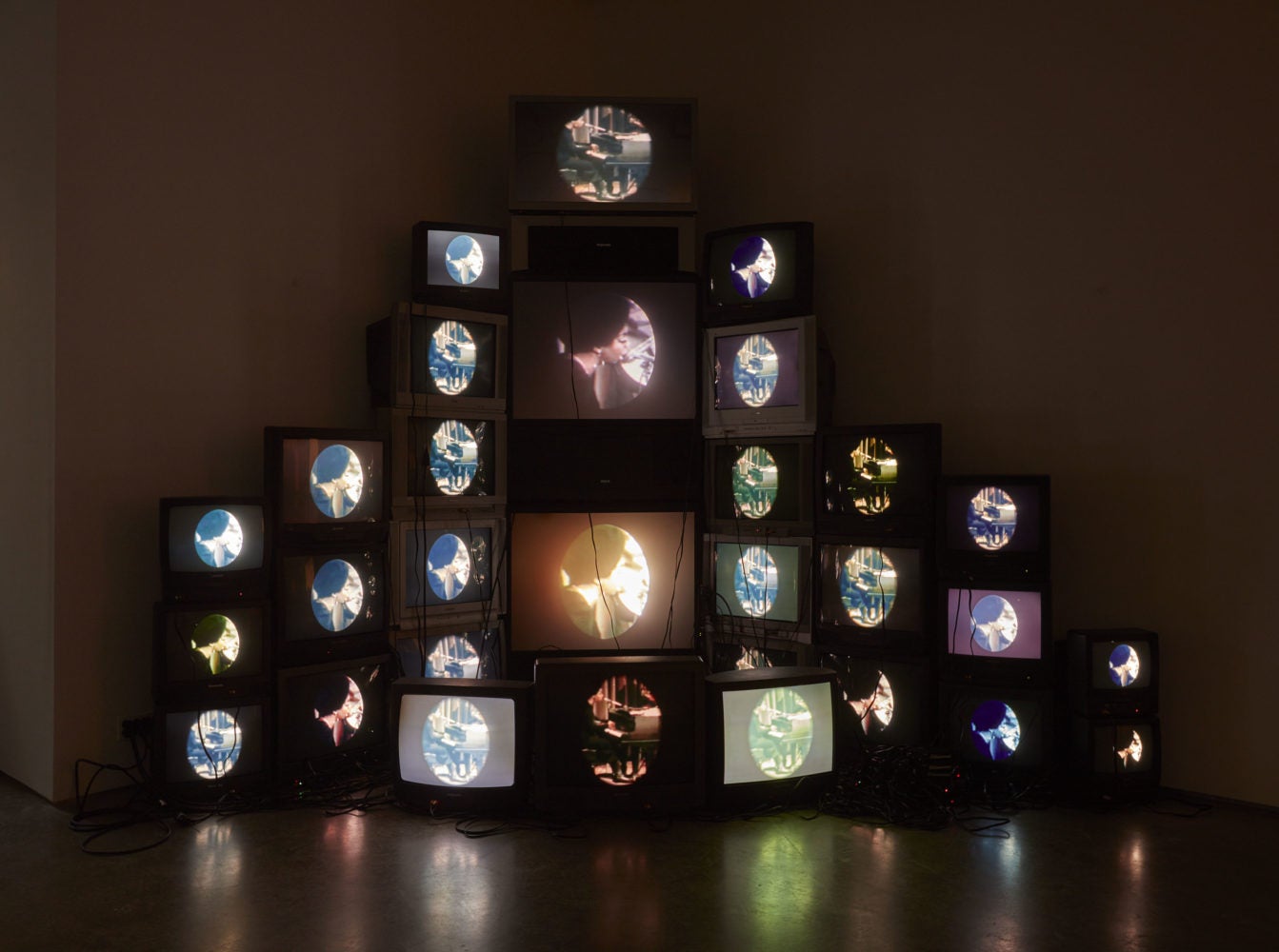
Paul Stephen Benjamin, Black is the Color, 2015; three-channel video, color, sound, loop.
Around the corner, the once faint sounds of Nina Simone’s voice could now be heard clearly. Black is the Color (2015) is a three-channel video on a loop, viewed on a series of televisions with exposed wires. The footage of Simone seated at the piano is sourced from the singer’s 1959 performance of “Black is the Color of My True Love’s Hair.” The spellbinding sound of her voice was the only audio element in the exhibition. Benjamin has altered the track to repeat the phrase “Black is a color,” referencing Raymond Sanders’s essay “Black is a Color.” In this work, black now has a sound, and this subtle alteration emphasizes the term’s boundlessness.
In this richly layered exhibition, Paul Stephen Benjamin showed that black cannot be understood in one way; it requires patience and dedication to unravel its complex nuances. Although it has long been understood as representing lack or absence, Benjamin reveals that black is infinite.
Paul Stephen Benjamin’s solo exhibition Pure, Very, New was on view at Marianne Boesky Gallery in New York from January 19 through February 16.

